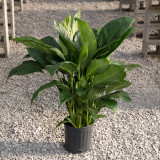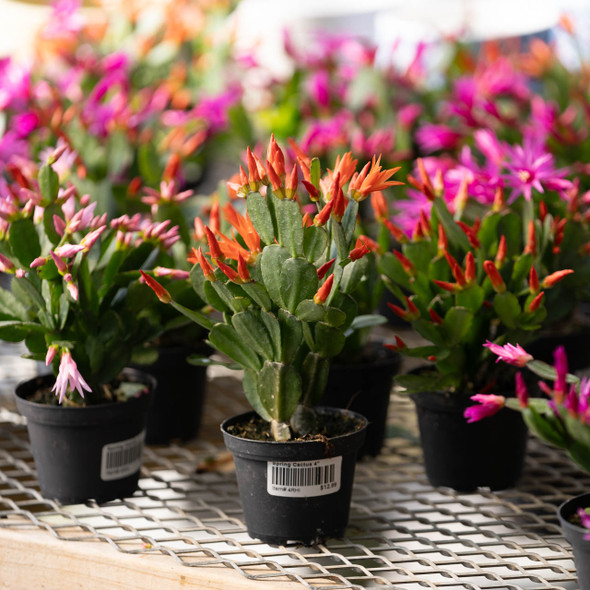Description
The Peace Lily, scientifically known as Spathiphyllum, is a popular and easy-to-care-for houseplant appreciated for its elegant, glossy green leaves and distinctive white blooms. Here are key features and care tips for the Peace Lily:
-
Leaves: Peace Lily leaves are glossy, oval-shaped, and typically dark green. The plant's overall appearance is lush and graceful.
-
Flowers: The Peace Lily produces white, hood-like flowers known as spathes. The spathe partially encloses the spadix, which is the upright structure containing the actual tiny flowers. While the spathe is the most noticeable part, the small flowers on the spadix contribute to the overall appearance.
-
Light: Peace Lilies thrive in bright, indirect light. They can tolerate lower light conditions, but too much shade may reduce flowering. Avoid exposing them to direct sunlight for extended periods, as this can lead to leaf burn.
-
Watering: Keep the soil consistently moist but not waterlogged. Peace Lilies are sensitive to underwatering, and their leaves will wilt to signal the need for water. Once watered, they quickly perk up. Be cautious not to overwater, as overly soggy soil can lead to root rot.
-
Temperature: Peace Lilies prefer temperatures between 65-80°F (18-27°C). They can tolerate slightly cooler conditions but should be protected from drafts and cold temperatures.
-
Humidity: Peace Lilies appreciate higher humidity levels. While they can adapt to average indoor humidity, they benefit from occasional misting or placement in a more humid environment.
-
Soil: Use a well-draining potting mix rich in organic matter. A mix formulated for orchids or a general-purpose potting soil with added perlite or vermiculite works well.
-
Fertilization: Feed the Peace Lily with a balanced liquid fertilizer every 4-6 weeks during the growing season (spring and summer). Reduce fertilization in the fall and winter.
-
Pruning: Trim brown or yellow leaves as needed to maintain the plant's appearance. Remove spent flowers by cutting the stem at the base.
-
Repotting: Repot the Peace Lily when it becomes root-bound or outgrows its container. Spring is generally a good time for repotting.
-
Toxicity: Keep in mind that Peace Lilies are toxic if ingested. Keep them out of reach of pets and children.
-
Air Purification: Peace Lilies are known for their air-purifying qualities. They can help remove certain indoor pollutants such as benzene, formaldehyde, and trichloroethylene.
The Peace Lily is a versatile and attractive plant suitable for homes and offices. With proper care, it can continue to thrive and produce its elegant blooms, bringing a touch of tranquility to indoor spaces.








